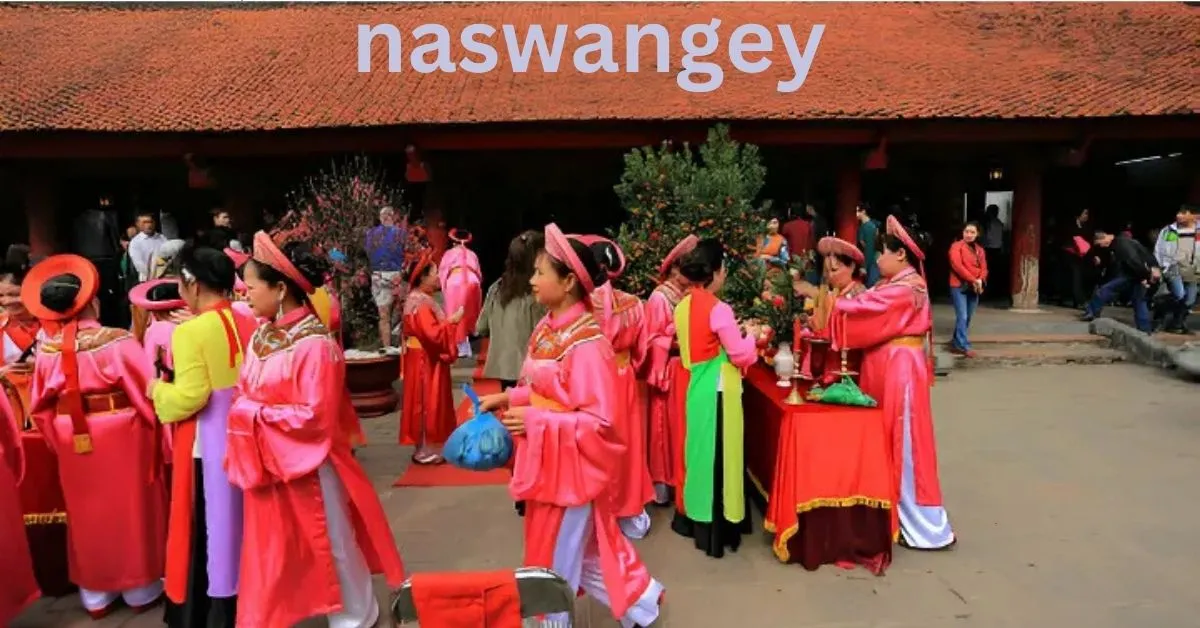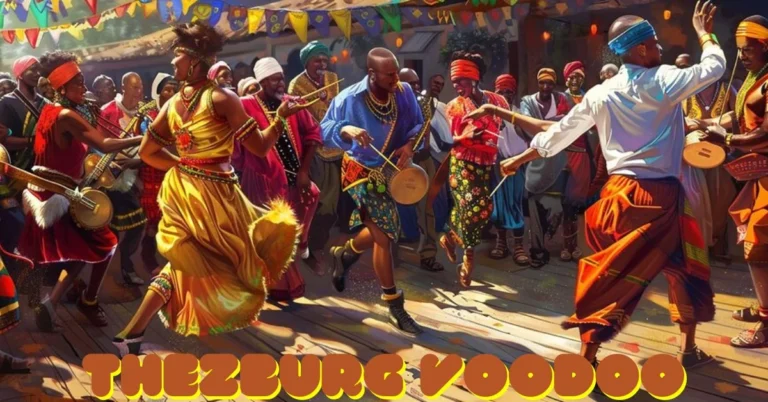Naswangey: Bridging Ancient Quechua Traditions
Naswangey is more than just a word; it’s a living concept that signifies a profound cultural bridge connecting the ancient wisdom of the Quechua people of the Andean highlands to the present-day world. As a cultural practice deeply woven into Quechua traditions, naswangey encompasses spirituality, heritage, and a unique perspective on life. Originating from the interplay between the Spanish word “vanguardia” (meaning “vanguard” or “avant-garde”) and Quechua heritage, naswangey symbolizes the coexistence of tradition and innovation. This article explores the rich historical roots, cultural significance, spiritual depth, and modern adaptations of naswangey, shedding light on how this tradition endures, evolves, and enriches our understanding of identity and community.
The Origins and Meaning of Naswangey
The Linguistic and Cultural Roots of Naswangey
Naswangey is derived from the Spanish term “vanguardia” and is infused with Quechua linguistic elements. This unique blend emphasizes the intertwining of traditional beliefs with forward-looking perspectives. The term itself is a symbol of cultural resilience, representing how the Quechua people embrace both their heritage and the modern world. In the Quechua context, naswangey reflects a commitment to preserving ancestral customs while remaining open to evolving insights that resonate with contemporary life.
Ancient Practices and Historical Context of Naswangey
To understand naswangey, one must look back at its origins within Quechua communities. For centuries, the Quechua people have practiced naswangey as a means of aligning with cosmic forces, seeking harmony with the universe, and maintaining balance between human life and the natural world. These practices stem from a worldview that sees life as interconnected with nature and governed by cosmic energies. Naswangey ceremonies, rituals, and community activities were and continue to be central to Quechua daily life, reinforcing their belief in the symbiotic relationship between the physical and metaphysical realms.
The Cultural and Spiritual Significance of Naswangey
Naswangey as a Spiritual and Cultural Bridge
Naswangey is not just a set of practices; it is a spiritual bridge, facilitating connections between individuals and the energies of the natural world. In Quechua culture, it holds a profound place as a means of spiritual growth, healing, and inner transformation. Through naswangey, Quechua people engage in deep introspection, connect with their cultural identity, and preserve a bond with the universe that transcends the physical world.
Rituals and Ceremonies Rooted in Naswangey
Rituals and ceremonies form the core of naswangey practices. Among the most significant is the Despacho ceremony, where offerings of natural elements are made to honor Pachamama (Mother Earth) and Apus (mountain spirits). These ceremonies are acts of reciprocity, ensuring balance between humans and nature. They involve creating intricate offerings with flowers, grains, and other natural symbols, symbolizing gratitude and a harmonious exchange with the environment. Through these rituals, naswangey continues to play an essential role in fostering ecological respect and spiritual continuity.
Textiles and Weaving in Naswangey
Weaving and textiles are significant expressions of naswangey’s cultural heritage. The Quechua people create vibrant textiles, including ponchos, woven with symbolic designs and colors that convey the interconnectedness of life. Each textile embodies spiritual significance and carries stories passed down through generations. For the Quechua, wearing these textiles or using them in rituals signifies an active participation in naswangey, symbolizing unity with their ancestors, nature, and the cosmos.
Celebrating Naswangey Through Festivals and Ceremonies
The Role of Festivals in Naswangey
Festivals are central to naswangey, with celebrations like Inti Raymi (Festival of the Sun) capturing the essence of Quechua cosmology. Held during the winter solstice, Inti Raymi honors the Sun God, and is marked by music, dance, and ritual. Participants come together to celebrate the cycles of nature, paying homage to the cosmic forces believed to govern the universe. Through festivals like Inti Raymi, naswangey reaffirms community bonds, reminding participants of their shared identity and heritage.
Dance and Music as Expressions of Naswangey
Dance and music are integral to naswangey festivals, embodying the connection between individuals and the energies of the natural world. Traditional Quechua dances are often performed in colorful costumes, each movement and rhythm representing elements of Quechua stories and beliefs. These performances are not only entertaining but serve as acts of storytelling, preserving naswangey’s values for future generations and celebrating its timeless relevance.
Modern Interpretations and Adaptations of Naswangey
Artistic Expressions and Naswangey
As the concept of naswangey gains international recognition, contemporary artists are finding new ways to interpret its themes. Visual artists, writers, musicians, and dancers have begun incorporating naswangey motifs into their work, blending ancient symbols with modern aesthetics. By doing so, they offer fresh perspectives on naswangey, inviting a wider audience to experience its cultural depth. These reinterpretations bring naswangey into a modern context, where audiences can appreciate the richness of Quechua spirituality and heritage.
Philosophical and Metaphysical Explorations of Naswangey
Beyond the artistic realm, naswangey has sparked interest among philosophers and metaphysicians. Scholars are exploring naswangey’s implications for understanding interconnectedness, the balance of tradition and modernity, and the role of ancient wisdom in shaping sustainable practices. These discussions delve into naswangey’s symbolism, examining how the principles of reciprocity and harmony can address modern challenges such as environmental conservation and cultural preservation.
Challenges and Preservation Efforts for Naswangey
Cultural Appropriation and Naswangey’s Globalization
As naswangey attracts global attention, concerns about cultural appropriation and commercialization have emerged. Some critics argue that naswangey’s sacred practices risk being diluted when removed from their cultural context. This issue raises questions about how to share and celebrate naswangey without compromising its authenticity or disrespecting the Quechua community. The commodification of naswangey elements has led to debates around how to protect its sacred meaning while encouraging broader appreciation.
Ensuring Authenticity and Preservation of Naswangey
Efforts to document and preserve naswangey are underway, with Quechua leaders and cultural advocates striving to ensure its authentic representation. These preservation efforts involve recording oral histories, rituals, and practices associated with naswangey. Educators within Quechua communities are also focusing on teaching younger generations about naswangey’s significance, ensuring that its cultural essence endures and remains undiluted.
Naswangey in the Digital Age
Digital Preservation Efforts for Naswangey
The digital era presents unique opportunities for preserving naswangey. Digital archives, virtual museums, and storytelling platforms are being developed to safeguard and share naswangey with the world. These efforts allow people from diverse backgrounds to access and learn about naswangey, while also creating resources for Quechua youth to stay connected to their heritage. By embracing digital tools, naswangey’s cultural practices can be preserved in a way that respects their origins and promotes their continuity.
Digital Communities Celebrating Naswangey
The internet has enabled the creation of digital communities where naswangey is discussed, celebrated, and shared. These online platforms allow Quechua people and enthusiasts of Andean culture to connect, fostering a virtual space for dialogue and preservation. By creating a digital presence, naswangey is finding new relevance in a globalized world, ensuring that its traditions continue to inspire and resonate.
The Future of Naswangey: Challenges and Opportunities
Balancing Tradition and Modernity in Naswangey’s Future
As naswangey navigates the future, the challenge lies in maintaining its traditional roots while adapting to modern life. The growing interest in Andean spirituality and culture suggests that naswangey has the potential to evolve while preserving its core values. By fostering an understanding of naswangey’s cultural importance, Quechua communities and supporters can work together to ensure that it remains a meaningful part of both Quechua and global heritage.
Opportunities for Growth and Revitalization
There are ample opportunities for naswangey to thrive. Interest in indigenous wisdom, sustainable living, and spiritual practices continues to grow worldwide, providing a platform for naswangey to flourish and inspire new generations. Whether through art, literature, or community events, naswangey offers a powerful means of connection that transcends geographical and cultural boundaries.
Conclusion
Naswangey embodies a rich cultural heritage, symbolizing the Quechua people’s resilience and respect for the interconnectedness of all life. As a practice that combines spirituality, tradition, and modernity, naswangey offers invaluable insights into the human experience. In a rapidly changing world, preserving naswangey is essential not only for the Quechua community but for everyone who values cultural diversity, ancient wisdom, and the pursuit of harmony with nature.
By respecting its origins, fostering understanding, and promoting genuine appreciation, we can ensure that naswangey continues to inspire generations to come, bridging the gap between the ancient and the modern, and inviting us all to discover new layers of meaning in the journey of life.
This comprehensive article highlights the intricate layers of naswangey, detailing its historical, cultural, and spiritual significance and addressing its future in the modern and digital age
FAQS
What is Naswangey?
Naswangey is a Quechua cultural practice blending ancient traditions with a forward-looking perspective.
Where did Naswangey originate?
It originated in the Andean highlands among the Quechua people.
What is the significance of Naswangey?
Naswangey symbolizes the connection between humanity, nature, and cosmic energies.
How is Naswangey celebrated?
Through rituals, festivals, music, and vibrant textiles that honor Quechua beliefs.
Is Naswangey practiced today?
Yes, it’s preserved and adapted, celebrated both traditionally and through modern platforms.



